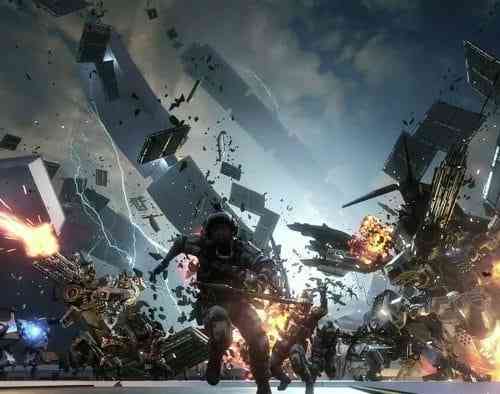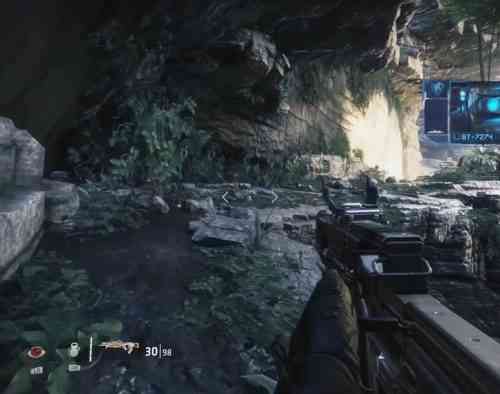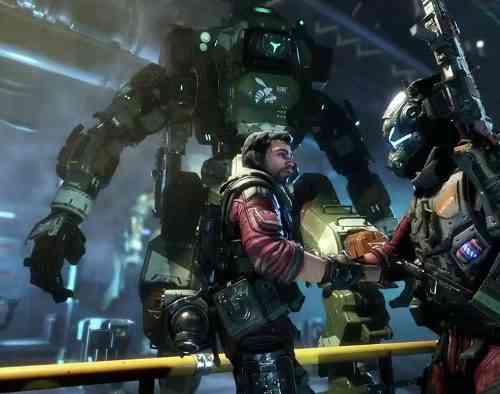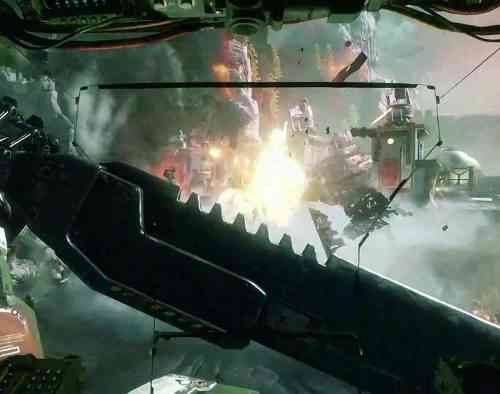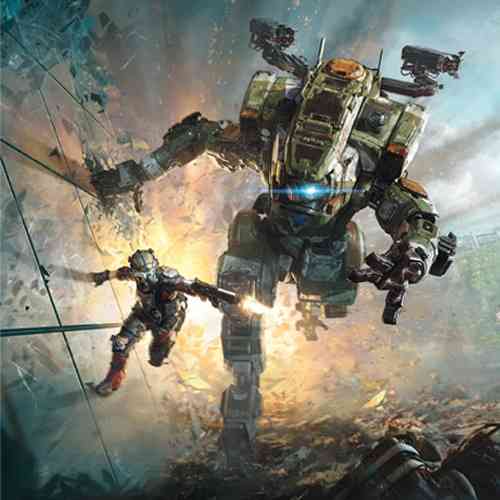Titanfall 2 Review
Movie sequels can often be a gamble. How do you capture what was great about the first one while trying not to retell the same story? Video game sequels, on the other hand, are a little more straightforward. You take both the criticism and the praise for the previous title and make the next iteration better. Respawn Entertainment did just that with Titanfall 2; they turned the ideas and mechanics from the first game into an even better experience. All of the pilot parkour and titan clashing from the first game is back, but this sequel boasts a full, albeit short, single player campaign, more titan chassis to choose from in multiplayer, more gun variety and more pilot customization. Basically, it’s Titanfall More.
The biggest new addition to the game is the campaign, perhaps because many people felt multiplayer only campaign of the first Titanfall didn’t feel like a proper story mode. I personally didn’t feel Titanfall needed a traditional campaign mode, but now that I’ve experienced what that’s like I realize what I was missing. Maybe that’s because many other modern FPS games that are focused on multiplayer seem like they tack on a campaign to simply check a box; however, Titanfall 2 seemed to take this addition seriously. Over the span of 9 missions (more like 8 and a tutorial), you assume the role of Jack Cooper, a rifleman training to become a pilot. Jack is quickly given a field promotion when he’s the last man standing in his squad. His mentor passes on his titan, BT, with his dying breath and from that point on the dynamic duo of man and metal become determined to carry out the mission. I honestly don’t remember the story and that’s not for a lack of trying; the story in the campaign feels very generic and forgettable. I remember something about saving the world from a big weapon but I feel like describes any space related movie or game since the first Star Wars. Still, the tired story doesn’t keep the campaign from playing like the best possible version of a buddy-cop movie; the banter between Jack and BT adds more than enough personality at just the right moments. It’s interesting to see a titan as an actual character instead of just a tool for pilots, something Respawn never really had the opportunity to introduce in the first game.
__________________________
“Respawn Entertainment did just that with Titanfall 2; they turned the ideas and mechanics from the first game into an even better experience.”
Something else I found interesting was how different the gameplay was in the campaign compared to multiplayer. Fans of the first game will remember calling titans after performing enough actions or after enough time has passed, but that isn’t the case with BT. He never actually “falls” in, he’s just introduced and hangs around. In fact, you spend a surprisingly large amount of time outside your titan. As a one man army you jump, slide, and wall-run through the missions taking out as many (or little) enemies as you can. Some missions really ham it up as far as the wall-running goes; some levels are designed to be more of a platforming challenge than a shooting gallery and I rather liked that change of pace. For example, the mission that puts you in an assembly line becomes more about surviving the shifting landscape than about surviving gunfire. Jumping through cramped hallways was less than enjoyable experience, though. Often Jack would cling to walls and jump in awkward ways like a drunk Spiderman. Similarly, with wall running along rounded corners, the camera would overcompensate and pull into the wall. This probably isn’t a huge issue on PC, but with a controller it became a little unwieldy. I don’t count those problems too hard against the level design of the campaign as most levels are much more open or direct. Ultimately, the campaign is a nice addition to the series that adds just enough variety and characters to keep it interesting but doesn’t drag on past it’s welcome.
The multiplayer is where the longevity of the game lies and I’m hoping it carries on much longer than the first Titanfall. Many of the concerns people had in the first game have been addressed, namely the number of titan chassis available. Three titans has turned into six, each with a distinct loadout this time. You can customize how your titan looks as well as some passive, but the active abilities are now all tied to a titan class. At first glance this may seem needlessly restrictive, but it makes for a better gameplay experience. You can now tell exactly what an enemy titan is capable of by the way it looks, allowing you to make better strategic decisions. Well, that’s the theory anyway. I tend to rush in head first and swing my giant mech sword with limited success but hey, I’m not going pro. My teammates won’t even notice a lot of the time since deaths aren’t reported to team statistics, something that’s been happening recently with online games. All that’s reported is your kills and score, how much you contributed to your team rather than how much you contributed to the other team. This helps reduce some excessive toxicity especially when you’re just spreading your wing and leaving the safety of the campaign nest.

Pilot loadouts are fairly similar to the previous Titanfall with one noticeable exception: no auto-pistol. That little piece of hot contention is out but many of the same guns return alongside some new ones. Weapons can be customized with unlockables by leveling up the weapon or by directly purchasing the upgrade. In fact, anything that’s unlockable can be unlocked by playing more or by spending credits earned in-game to unlock something in particular that you just can’t wait for. I’ve seen other games take this approach and I’m still a huge fan. I hate using the iron sights for most guns and I don’t want to wait to unlock all of them so I purchased the upgrade with the small amount of credits they start you with to forgo the torture of iron sights. Consequently, I’ll need to wait longer to unlock the last few titans, but I’m happy using the three default classes until then.
The maps all seem new and bigger, all designed with mobility in mind: structures and corridors for pilot fights with open roadways and bridges for titan fights. I honestly haven’t found anything particularly revolutionary with the maps themselves as they are designed just as well as they were in Titanfall except with a little more emphasis towards the game modes they support. There are a dozen game modes, some that are different variations of a deathmatch, but the more objective focused modes, Bounty Hunt and Amped Hardpoint, are far more interesting to me. Bounty Hunt involves taking waves of AI enemies to earn bounties. Once the waves clear the banks open and you can deposit your earnings. If you die before banking, you lose half of your earnings. The strategy is pretty clear for this mode, but knowing that you should bank your $400 earnings doesn’t make it any less stressful when you need to cross the map to make a deposit. Amped Hardpoint is like any point capture mode except that you earn double points for capping a point longer and staying on it. This points are not usually easily defendable, adding some significant challenge to this mode. No matter which of the dozen modes you play the multiplayer always feels very fast paced and action packed.
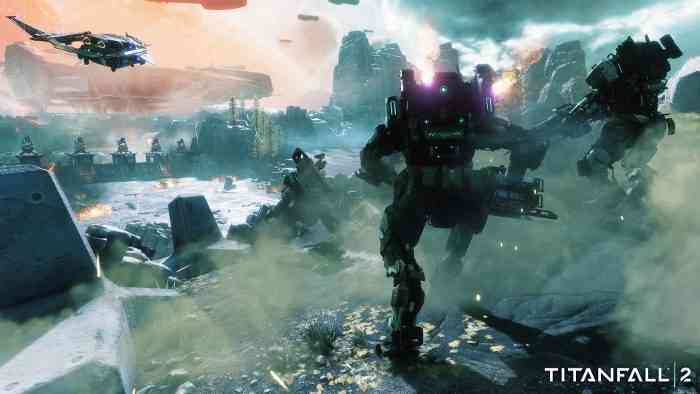
It saddened me to see the player base from Titanfall dwindle so quickly because it was something so different from many other shooters at the time. The newest iteration in Titanfall 2 has clearly demonstrated that the team at Respawn was not ready to give up on an awesome concept. With just the addition of a well-designed campaign and more titan chassis for multiplayer Titanfall 2 would have been a decent game, but because of the focus on customization and a variety of other details this game is obviously a labor of love.
***PS4 review code was provided by the publisher***
The Good
- Campaign interesting
- Level design
- Plenty of variety
The Bad
- Tight corridors become frustrating
- Story a little tired and forgettable
